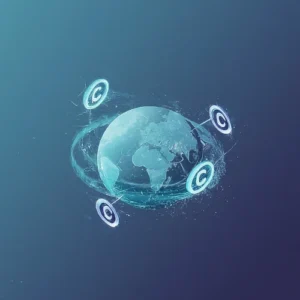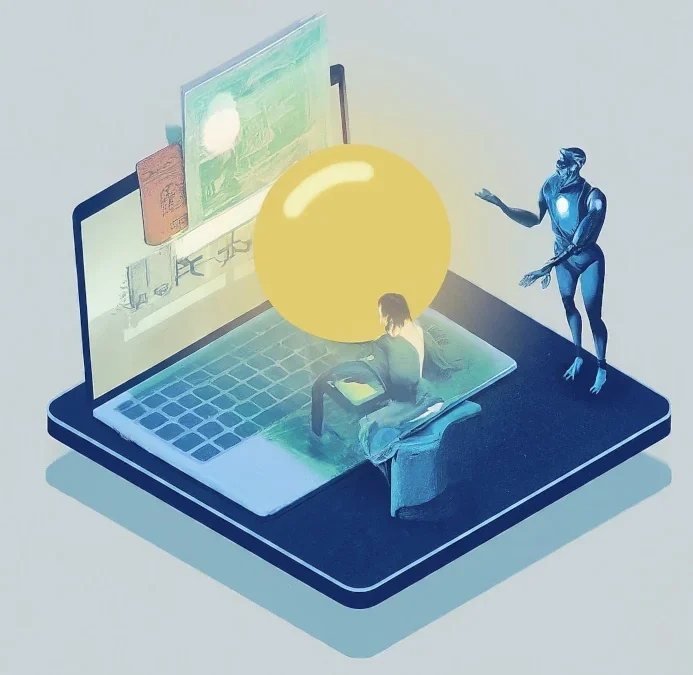The rise of powerful artificial intelligence (AI) systems has brought incredible advancements and creative frontiers, but it has also ignited complex challenges for the internet publishing industry when it comes to copyright and intellectual property. AI-powered tools now possess the capacity to generate text, images, and other forms of content, blurring the lines of ownership and raising questions about originality.
In this blog post, we’ll delve into the reasons behind these copyright concerns and examine how the internet publishing industry is adapting to ensure robust intellectual property protection in the age of AI.
Why AI is a Game-Changer for Copyright
Let’s break down the key reasons why AI is making waves in the world of copyright:
- Machine-Generated Content: AI algorithms, such as large language models, have reached a level of sophistication where they can generate human-quality content, from news articles and blog posts to poems and scripts. This raises the question of who owns the copyright – the AI developer, the person who prompted the AI, or does copyright protection even apply?
- Deepfakes and Synthetic Media: AI can seamlessly manipulate audio and video, producing highly convincing deepfakes. This can lead to the misappropriation of individuals’ likenesses and potentially damaging or defamatory content, raising ethical and copyright concerns.
- Training Data Scraping: AI models often train on massive datasets of text, images, and code. These datasets may include copyrighted material, leading to potential copyright infringement if the original creators weren’t given permission or proper compensation.
How the Publishing Industry is Responding
The internet publishing industry isn’t sitting idly by. Here are the key methods being employed to strengthen copyright safeguards in the AI era:
- Evolving Copyright Laws: Legal frameworks are adapting to address AI-generated content. Discussions are underway about modifying current laws to determine copyright ownership in these unique cases and to ensure fair use principles are upheld.
- Digital Rights Management (DRM): DRM systems use encryption and access control mechanisms to protect digital content. In the age of AI, DRM can help prevent unauthorized use, reproduction, or modification of copyrighted works.
- Watermarking and Fingerprinting: Embedding invisible watermarks or digital fingerprints within content allows for easier copyright tracking and identification. This deters unauthorized use and supports the identification of infringing material, even if altered.
- Enhanced Content Detection Tools: Using AI ironically helps fight AI-related issues. Content detection software powered by machine learning is becoming more capable of identifying plagiarism, copyright infringement, and the unauthorized use of synthetic media.
- Blockchain Solutions: Blockchain’s distributed ledger technology offers a tamper-proof way to register intellectual property ownership. This could create more reliable provenance records and streamline rights management.
- Industry Collaborations: Publishers, legal experts, and AI developers are establishing collaborations and guidelines to address AI and intellectual property in a balanced, practical manner.
Policy Initiatives and Legislative Efforts

- US Copyright Office Study: The US Copyright Office is conducting an extensive study on AI and copyright law. They seek public comments on questions like the copyrightability of AI-generated works, authorship concerns, and issues related to the use of copyrighted materials in training AI models. (https://www.federalregister.gov/documents/2023/08/30/2023-18624/artificial-intelligence-and-copyright)
- Generative AI and Copyright Law (US Congress): This Congressional Research Service report provides an in-depth analysis of legal considerations surrounding AI-generated works and potential legislative responses. (https://crsreports.congress.gov/product/pdf/LSB/LSB10922)
- Japan’s IP Policy Blueprint: In 2023, Japan’s government outlined a policy indicating they would consider legislation to address how AI developers use copyrighted materials for model training, hinting at potential future restrictions.
- The White House Blueprint for an AI Bill of Rights: While not directly focused on copyright, this US policy document establishes principles for the design and use of AI. It includes sections on data privacy, algorithmic discrimination, and the right to notice and explanation. This could indirectly shape how copyright frameworks adapt to AI. (https://www.whitehouse.gov/ostp/ai-bill-of-rights/)
Important Note: Legislation around AI and copyright is evolving rapidly. These are just a few examples, and it’s essential to stay up-to-date on the latest policies and proposals in your specific region.
Looking Forward: Challenges and Opportunities
The intersection of AI and copyright within internet publishing is far from settled. We must keep these points in mind:
- The AI authorship debate: Can an AI system truly be considered an author under copyright law? Should the rules change to accommodate machine-generated works?
- Fair use and transformative work: Determining the boundaries of fair use with AI-generated content will require careful legal consideration.
- Balancing innovation and protection: Finding the right balance is key— ensuring copyright protection while fostering AI-driven innovation will be an ongoing effort.
The internet publishing industry must continue its proactive approach, embracing technological advancements while advocating for strong intellectual property frameworks to ensure a just and sustainable digital future.

